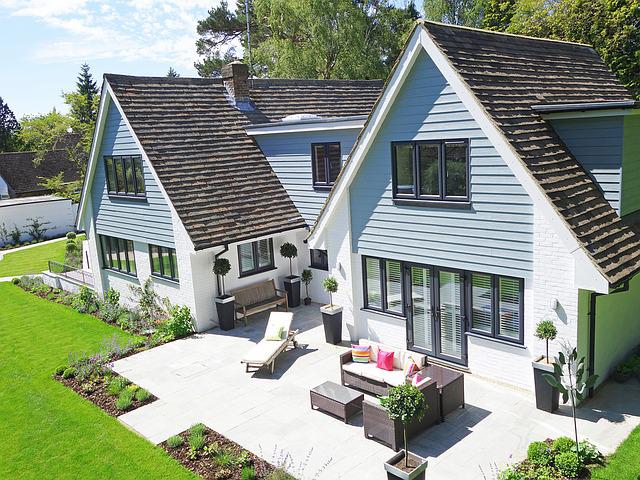Building a new home can be a costly but worthy investment that allows you to tailor it to suit your lifestyle, tastes, preferences, and needs. It enables you to build an energy-efficient design to reduce heating and cooling costs. Before building, consider what you want in your dream home because that will guide the builder into actualizing it.
The home building process isn’t always smooth, and some mistakes could cost you dearly. Familiarizing yourself with these errors helps you anticipate them and find potential solutions for when they occur. This article discloses seven costly mistakes to avoid when building a new home.
Picking the wrong homebuilder
Choosing the wrong home builder for your new construction project could result in structural issues, poor workmanship, and a dodgy building. It may also lead to your building collapsing, endangering lives, and causing losses. To ensure your dream home comes to reality, pick qualified and experienced builders and ensure they’re insured and licensed.
Look at their past projects to make sense of their style and determine whether their skills are suitable for your project, read online reviews and testimonials from past clients, and consider what they cover in their costs. Familiarizing yourself with the steps to building a home prepares you for what to expect throughout the process and helps you determine the right questions to ask when selecting a builder.
Not putting thought into location choices
Location is a crucial factor to consider when building a new home. Ignoring it means various aspects of daily living will be negatively affected. When selecting a location for your new construction, consider proximity to shopping centers, schools, your workplace, and other vital social amenities. Your lifestyle and safety should also play a role in your location choice. Consider how the location you pick can affect the home’s potential resale value.
Additionally, you may want the area’s value and growth potential, local building restrictions and codes, and environmental concerns. While a location may seem ideal initially, how it affects your life in the long term should help you make the final decision.
Making a floor plan based on current requirements
When making a floor plan for your new home, it’s essential to consider what you wish your home to have in the future. Do you expect your family to grow, or are you considering bringing in new pets? If your kids are soon becoming teenagers, their needs should be factored in. With a clear idea of your future home requirements, the floor plan design process becomes easier and eliminates the need for future costly design changes.
Beginning your project without all the professionals you need
Starting your building project without all the professionals needed for your construction project can cause delays and cost you more in the long run. While vetting all the contractors required for your project, including builders, general contractors, architects, and interior designers, can be time-consuming, it’s vital because you have a massive investment at stake. Hiring all the construction experts you need before starting the building process saves you money and other problems in the future.
Not knowing how to read builders’ quotes
Provide potential builders with adequate information to offer reasonable estimates. Reading builders’ quotes can be frustrating, leaving you wondering what it entails. Ask your builder for an itemized expenses list as included in the quotation plus the ones not included to determine a more precise building costs estimate. This lets you see the expensive building aspects of your project, where most of your funds will be spent, and where you can potentially save with some adjustments.
To read and fully understand builders’ quotes, consult a third party with the necessary industry knowledge. With the help of a building inspector, you can get an extensive explanation of their plans and building costs without worrying about conflict of interest because they don’t have a financial stake in your home’s construction or a motive to mislead you or be dishonest.
Making changes during the construction phase
While building a custom home requires a significant financial investment, design changes during the construction phase are costlier than when it’s done during the initial design process. Making changes later when the construction has already begun causes delays, increases construction costs, and stresses you throughout the whole process. To avoid making changes later, get your design on paper and consider touring homes with the same layouts for a realistic feel of how your home will look like. Talk to your design contractor during the home designing phase and give them all the necessary details for a good design.
Don’t be worried about the cost. If you think about it, hiring the right contractor is cheaper than making preventable mistakes. With home building and renovation, one wrong move can cost you a fortune. For example, the incorrect mixing of concrete can result in weak foundations. As a result, your home might collapse even from a small earthquake.
Also, doing away with a contractor can defeat the purpose of your home renovation. Instead of beautifying your home, you might make it less appealing. For instance, an excellent contractor knows how to use pro tools for enlarging and finishing holes to make your walls look smooth.
Miscalculating your project’s cost
Calculating your project’s cost can be tedious, considering the many unexpected variables as the project continues. Miscalculating your project’s cost may result in compromises and frustrations as funds may run out. Nonetheless, you can get a building price range by looking at costs to construct homes like yours online.
Endnote
Building a custom home can be costly, and any errors can make it more expensive and even delay the project. Consider avoiding these mistakes when building a new home.








